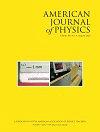利用有机闪烁体识别中子源的多重计数:一个先进的教学实验室
IF 0.9
4区 教育学
Q3 EDUCATION, SCIENTIFIC DISCIPLINES
引用次数: 1
摘要
在这个先进的教学实验室中,学生探索核物理领域中使用的复杂检测系统和无损检测技术。在建立和校准中子探测系统后,学生进行辐射信号的定时和能量沉积分析。通过对裂变中子信号的提示计时,利用多重计数进行特殊核材料(SNM)无损检测。我们的实验装置由八个反式二苯乙烯有机闪烁探测器组成,并在一个自发裂变源和两个(α,n)源上进行了测量。通过比较每个源的测量多重分布,可以将(α,n)源的测量结果与自发裂变源的测量结果区分开来。这样的比较可以防止欺骗,即(α,n)中子源对裂变源的故意模仿。这个教学实验室是为对有机闪烁体、中子源和防扩散辐射测量技术感兴趣的核工程和物理专业学生设计的。本文章由计算机程序翻译,如有差异,请以英文原文为准。
Multiplicity counting using organic scintillators to distinguish neutron sources: An advanced teaching laboratory
In this advanced instructional laboratory, students explore complex detection systems and nondestructive assay techniques used in the field of nuclear physics. After setting up and calibrating a neutron detection system, students carry out timing and energy deposition analyses of radiation signals. Through the timing of prompt fission neutron signals, multiplicity counting is used to carry out a special nuclear material (SNM) nondestructive assay. Our experimental setup is comprised of eight trans-stilbene organic scintillation detectors in a well-counter configuration, and measurements are taken on a spontaneous fission source as well as two (α,n) sources. By comparing each source's measured multiplicity distribution, the resulting measurements of the (α,n) sources can be distinguished from that of the spontaneous fission source. Such comparisons prevent the spoofing, i.e., intentional imitation, of a fission source by an (α,n) neutron source. This instructional laboratory is designed for nuclear engineering and physics students interested in organic scintillators, neutron sources, and nonproliferation radiation measurement techniques.
求助全文
通过发布文献求助,成功后即可免费获取论文全文。
去求助
来源期刊

American Journal of Physics
物理-物理:综合
CiteScore
1.80
自引率
11.10%
发文量
146
审稿时长
3 months
期刊介绍:
The mission of the American Journal of Physics (AJP) is to publish articles on the educational and cultural aspects of physics that are useful, interesting, and accessible to a diverse audience of physics students, educators, and researchers. Our audience generally reads outside their specialties to broaden their understanding of physics and to expand and enhance their pedagogical toolkits at the undergraduate and graduate levels.
 求助内容:
求助内容: 应助结果提醒方式:
应助结果提醒方式:


